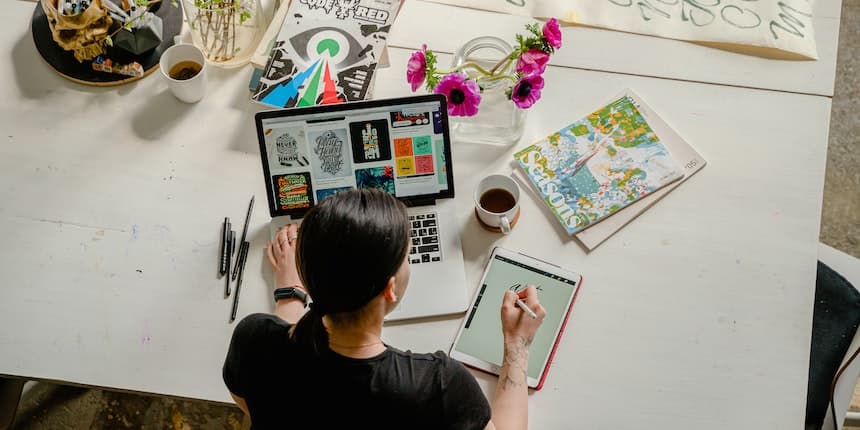MSW Logo Full Form
What is the full form of MSW Logo?
Based on the computer language Logo, MSWLogo or also referred to as Master of Social Work is an interpreted programming language with a graphical user interface. George Mills created it at the Massachusetts Institute of Technology.It shares Brian Harvey's UCBLogo's fundamental design.
Language of Graphics Oriented or LOGO is a programming language that has been specially designed to allow us to have fun while learning the craft of programming. We can design, sketch, and calculate with Logos.
Multiple turtle graphics, 3D computer graphics, and input from ports COM and LPT are all supported by MSWLogo. Input/output (I/O) is accessible through this (Graphical User Interface)GUI and keyboard and mouse actions can cause interrupts. It also supports a Windows interface.
The command gif saves in MSWLogo version 6.5 can also be used to create straightforward GIF animations. The software is also employed in schools. The Great Logo Adventure, a comprehensive Logo guidebook utilizing MSWLogo as the example language, was written by Jim Muller.
FMSLogo: An Educational Programming Environment, a free, open-source implementation of the Logo programming language for Microsoft Windows, has developed from MSWLogo. David Costanzo is primarily responsible for its development and upkeep, and it is made available under the GNU General Public License (GPL).
Features

As of version 6.5b, MSWLogo offers a wide range of features, including:[2]
TCP/IP (Transmission Control Protocol/ Internet Protocol) networking using Winsock
Win32, Win32s, and Win16
Text in all font and size options.
1024 separate turtles.
Turtles with bitmaps
Cut, paste, and stretch a bitmap
Bitmaps and text from the clipboard
MIDI (Musical Instrument Digital Interface) equipment
Direct I/O (Input/Output) for external hardware control
Communications via parallel and serial ports
Zooming
Most recursive functions are optimized through tail recursion.
handling of user errors
Standard Logo analysis
Image backup and restoration in.
Bitmap Image file or BMP files are in
Bits per pixel for color: 1, 4, 8, 16, and 24
Windows hypertext help standard
Windows' default printing
separate work and library spaces
Building Windows dialogue boxes
Event-driven programming: timer, mouse, and keyboard
WAV (Waveform Audio File Format) music files, CD-ROM control, and other multimedia devices.
Event timers that support multitasking
3D perspective drawing: solid and wireframe
GIF (graphics interchange format) animation creation
Using LOGO
OS Windows 7
Go to Start > All Programs >
MSW Symbol.
OS Windows 10
Click on the Windows button>
MSW Logo, type>
the MSW Logo.
Turtle
A triangle that appears as a turtle in the Logo Graphics Window in response to the Logo commands that we enter. The Turtle's dwelling is located in the screen's center. Primitives is another name for these instructions. The Command Input Box bar is used to enter primitives.
PU Primitive or PENUP
To raise the turtle's pen, use the PENUP (PU). The turtle moves without a line once you have given the PU a primitive.
PD or PENDOWN Primitive
After the PENUP primitive, use the PEN DOWN (PD). It stops drawing and sets down the pen.
FD 40: The turtle drew a 40-step line.
The pen is raised, PU.
Without drawing, the turtle ascends 40 steps, or FD 40.
PD: The turtle pen has fallen.
FD 20: The turtle drew a 20-step line.
In LOGO, the key "Enter" must be pressed after every command.
PENERASE or PE Primitive
A primitive called Penerase (PE) functions as an eraser.
Example FD 50: The turtle advances by 50 steps (FD)
PE - The primitive PENERASE (PE) will be in use.
BK 25: The turtle goes back and undoes 25 steps (BK).
SETPC Primitive
The turtle's pen colour can be changed by programming the SET PEN COLOR or SETPC primitive.
REPEAT primitive
To repeatedly have the computer perform an action, use the REPEAT primitive. The REPEAT primitive is very time and effort efficient.
We only write the repeat primitive and the number we should repeat, rather than repeatedly expressing the same instruction. The looping primitive is repeated.
Frequently Asked Questions (FAQs)
There are two main sections in MSWLogo: the Screen and the Commander.
The term "to" must be the first word in the method or subprogram, followed by a name we can think of. The following step is to type in every command that would be typed into the command line. The word "end" must be used to conclude the process.
The turtle, the most recognisable element of the Logo (originally a robot with the same name), was an on-screen "cursor" that displayed the results of movement commands and a tiny retractable pen, which together produced line graphics.
The four fundamental components of logo design are the logo brand, style, colors, and font. It is an important step in the design process where you must give it your all to create something original and distinctive.
Language Of Graphics Oriented is its full form